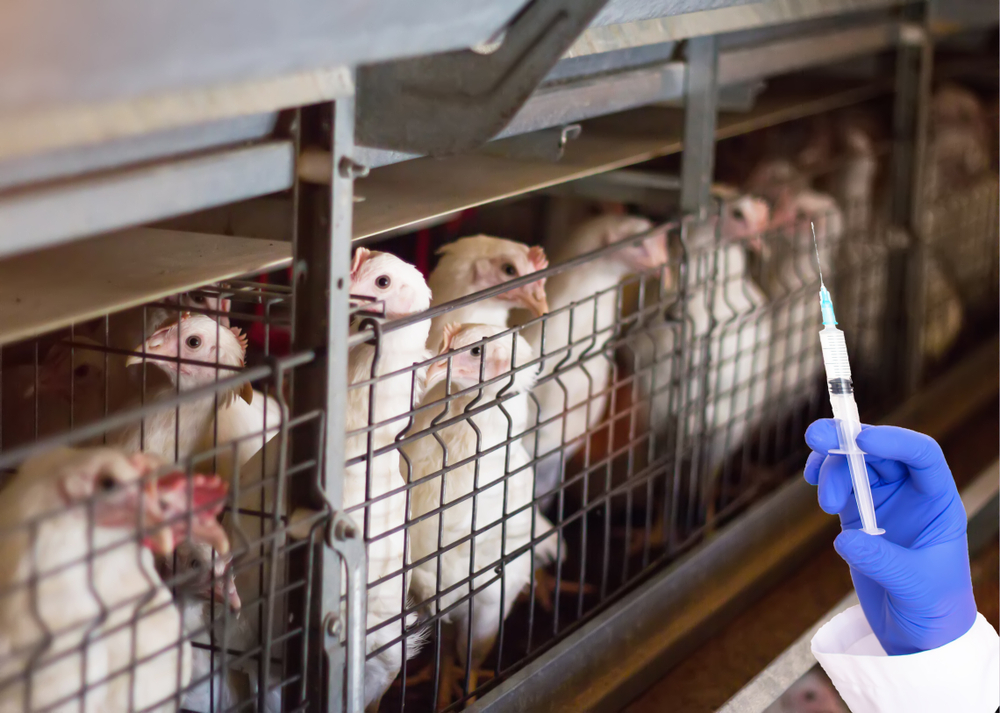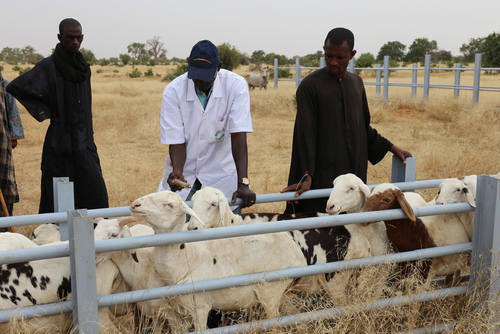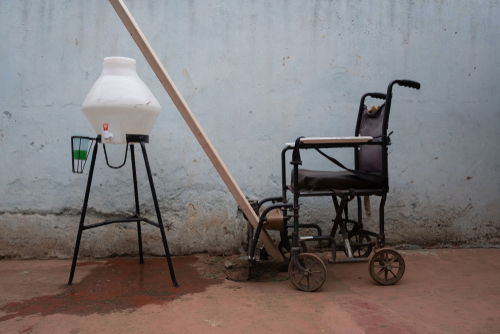November 29, 2023

Optimization of non-pharmaceutical interventions in a two-variant outbreak depends on mitigation goals.
OHT’s Ramanan Laxminarayan and colleagues created a computational modeling framework incorporating genomic surveillance techniques to study the effectiveness of different interventions in a two-variant pandemic scenario. Two intervention regimes, single-period and adaptive non-pharmaceutical interventions (NPIs), were assessed for their impacts on the burden of infection. In a scenario where the second variant of a disease is imported shortly after the emergence of the first variant, a delayed single-period intervention with intermediate strength most effectively flattens the size of the second variant peak, whereas an early, strong single-period NPI is best at minimizing the number of cumulative cases of disease. However, when the second variant’s importation time is delayed, the best time to implement single-period NPIs to flatten the peak is at the beginning of the exponential growth phase of the second variant’s peak. Adaptive NPIs of intermediate strength were also shown to minimize the peak size and reduce disease prevalence in the modeling simulations. These findings demonstrate that intervening early in dynamic outbreak situations may not always be the most effective strategy to reduce the disease burden in affected populations, and depending on the target metric, different interventions lead to better outcomes. [PNAS]
Assessing taxation strategies on antibiotics for veterinary use
OHT’s Thomas P. Van Boeckel co-authored an article comparing different taxation schemes for antibiotic usage in food-producing animals to currently implemented bans. Three strategies were assessed under a baseline rate of a 50 percent price increase after 3,000 days when the prevalence of resistance reaches equilibrium: 1) taxation applied across all antibiotics, or flat tax (FT); 2) taxation to antibiotic classes with the highest, medium, and lowest levels of resistance, or single taxation (ST); and 3) differential taxation scheme, in which taxation is scaled every three years according to the prevalence of resistance among the taxed antibiotic class (DT). While bans on antibiotics with high and medium resistance performed best on the metrics assessed in the study, the performance across all three taxation schemes matched that of the bans at a 60 percent taxation rate. The DT and FT strategies generated the largest median revenues, US$1.3 billion and US$1.29 billion, respectively. In addition to generating yearly revenue, veterinary antibiotic taxation offers more flexibility than bans through tradable permit schemes and caps on taxation rates. [One Health]
Non-vaccine-targeted HPV types are prevalent in individuals vaccinated against HPV in Finland.
A randomized controlled trial of 33 communities in Finland examined the community-level ecological diversity of genital human papillomavirus (HPV) eight years after the introduction of HPV vaccination. Residents were randomized to three groups: gender-neutral HPV16/18 vaccination, girls-only HPV16/18 vaccination, and gender-neutral non-vaccinated (control arm). A significant depletion in oncogenic HPV types was observed in both gender-neutral and girls-only vaccinated groups, 4-8 years post-vaccination. However, increases in HPV type diversity increased in both groups, especially in the gender-neutral group, warranting the need for a better understanding of the transmission risk, virulence, and oncogenicity of non-vaccine-targeted HPV types. [Cell Host & Microbe]
Antibiotic resistance profiles of tick-borne bacteria
A review analyzed current information regarding antibiotic-resistant tick-borne bacteria (TBB) – which have spread geographically due to global warming – and antibiotic resistance genes (ARGs) in the tick microbiome. Literature shows that most TBB belong to the Rickettsiales order and span 87 species. The bacterial genera and species primarily identified in the tick microbiome include Staphylococcus aureus, Staphylococcus chromogenes, and species of the Coxiella genus. Commensal microorganisms in the tick microbiome may contain ARGs and transmit them to pathogenic microorganisms such as TBB. While treatment failure of diseases such as spotted fever is rare, exposure to broad-spectrum antibiotics can help perpetuate ARGs and increase the prevalence of multidrug-resistant bacteria in the tick microbiome. [Journal of Infection and Public Health]
Mobility and occupational risk are associated with a higher risk of Crimean-Congo hemorrhagic fever virus in humans in Mauritania.
A retrospective study was conducted to determine the prevalence of Crimean-Congo hemorrhagic fever virus (CCHFV) antibodies and RNA in humans in Mauritania, where CCHF is endemic and has caused recurrent outbreaks since the 1980s. The overall prevalence of CCHFV antibodies was 11.8 percent among 263 human samples (95% CI: 8.4-16.3%) and 33.1 percent of 1,380 domestic animals (95% CI: 30.1-36.3%). Mobility appeared to play a significant role in contracting the disease for humans and large ruminants. Additionally, the seroprevalence of CCHFV antibodies in large ruminants increased with age and livestock density, whereas in humans, those working in close contact with animals were at higher risk of infection. [BMC Infectious Diseases]
The number and size of blood meals are associated with dengue virus transmission and midgut damage in mosquitoes.
Researchers assessed the effects of blood-feeding disruptions among Aedes aegypti mosquitoes on the transmission of dengue virus (DENV) and on the integrity of their midgut basal lamina. They found that partial blood feeding, normally caused by defensive hosts’ interruptions and simulated by shortened feeds in the laboratory setting, resulted in an intermediate level of midgut basal laminal damage and disorder that was decreased compared to fully fed mosquitoes and increased compared to unfed mosquitoes. When mosquitoes were provided with a full primary DENV-infectious feed followed by a partial secondary feed, they had higher rates of DENV dissemination than those who did not receive a secondary meal. [PLOS Neglected Tropical Diseases]
Cost-effectiveness analysis of single- and two-dose human papillomavirus vaccination among girls in India.
The health and economic effects of human papillomavirus (HPV) vaccination at the national and state levels in India were assessed using HPV transmission and cervical cancer progression models. Using state-specific cervical cancer incidence rates and local cost data, researchers determined that the single-dose HPV vaccine administered to 10-year-old girls with 90 percent vaccine coverage would be cost-effective, with an annual investment of less than 10 percent of the cost of the universal childhood vaccination program in India. In this scenario, the annual incidence of cervical cancer was projected to decrease by 10 percent 30 years after implementation. The incremental cost-effectiveness ratio (ICER) of this scenario compared to no vaccination was US$406 per disability-adjusted life-year averted, which falls below the cost-effectiveness threshold of 30 percent of the Indian GDP per capita. The single-dose HPV vaccination scenario was found to be more cost-effective than the two-dose routine, even after accounting for state-specific cancer incidence. [BMJ Global Health]
The development of bedaquiline resistance among TB patients is associated with exposure and resistance to other antibiotics.
Researchers conducted a longitudinal retrospective cohort study to assess resistance to bedaquiline, a WHO-endorsed tuberculosis (TB) drug, in adults with culture-positive pulmonary tuberculosis in Cape Town, South Africa. Among 38 patients who underwent phenotypic drug susceptibility testing for bedaquiline, three patients (8 percent) had primary resistance, 18 (47 percent) gained resistance through acquisition or reinfection, and 17 (45 percent) were susceptible at both baseline and follow-up. At baseline, 8 percent of isolates were resistant to bedaquiline whereas 55 percent demonstrated bedaquiline resistance on follow-up. Patients with bedaquiline resistance at follow-up were susceptible to fewer drugs than patients who were susceptible to bedaquiline (p < 0.0001). Furthermore, gaining bedaquiline resistance on follow-up was associated with clofazimine exposure and baseline fluoroquinolone resistance. [The Lancet Microbe]
Image from Shutterstock











